All-Electric Homes
A Health Professional's Guide
Intended for health professionals, advocates, and anyone interested in the climate-health nexus.
Learn more about the health impacts of fossil fuel combustion in buildings and the benefits of electrifying buildings.

RMI's Role
Carbon-free buildings not only combat climate change but are critical in protecting our health. RMI promotes electrification as a triple-win strategy benefiting climate, health, and air quality. Done right, building electrification should also be cost-effective and promote environmental and climate justice. As trusted messengers treating the health concerns of their communities, health professionals can also play a vital role in advocating for building electrification. This guide provides science-based information on how fossil fuels in buildings contribute to air pollution and health problems and explores beneficial solutions.
Fact Sheets about Building Electrification and Health

Beneficial Electrification For Low-Income Communities
Discusses an opportunity to ease the climate and health burden on resource-constrained households.

Deep Dive on Gas Stoves and Range Hood Ventilation
Presents research on range hood ventilation, plus in-home and policy strategies to improve ventilation.

A Health Professional's Guide to Clean Cooking
Discusses how to minimize the health risks of gas stoves or switch to induction stoves for better health.
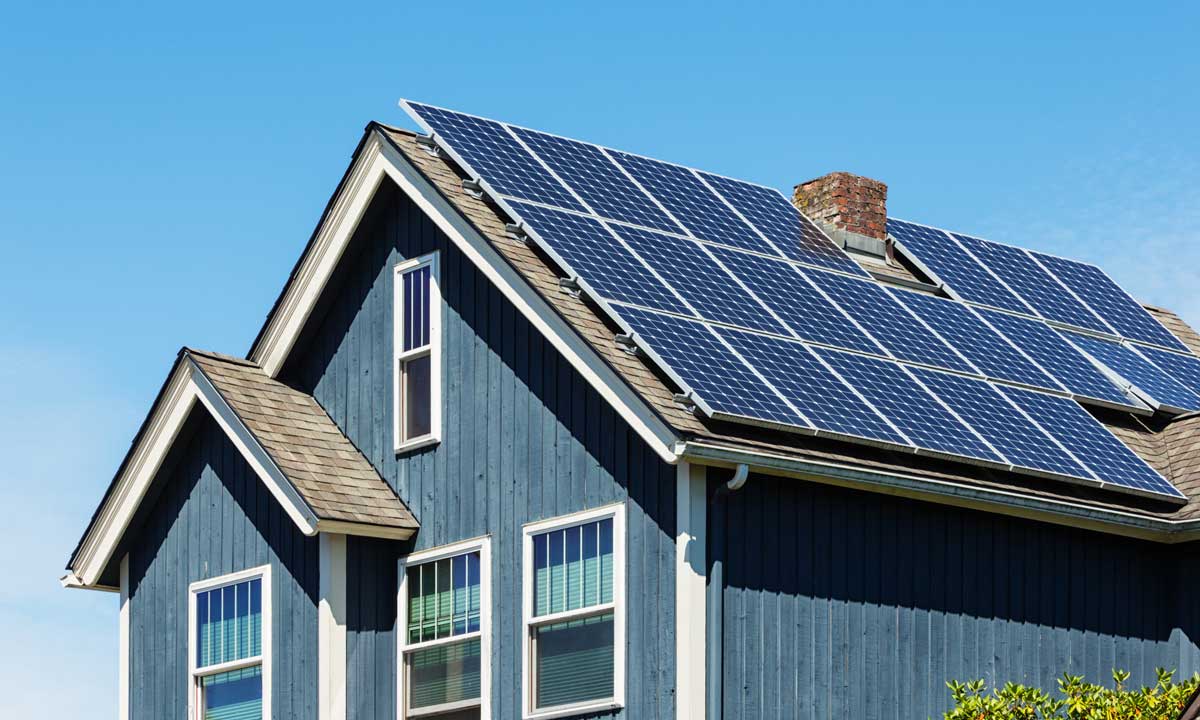
All-Electric Buildings Are Healthy Buildings
Defines building electrification and overviews the health benefits.

Gas Appliance Pollution Inequitably Impacts Health
Explains why gas appliance pollution inequitably impacts health and who would gain the most from electrification.

Health Professionals Can Play a Role in Electrification
Encourages health professionals to engage in electrification efforts through education and advocacy.
Commonly Asked Questions about Building Pollutants
Carbon Monoxide FAQ
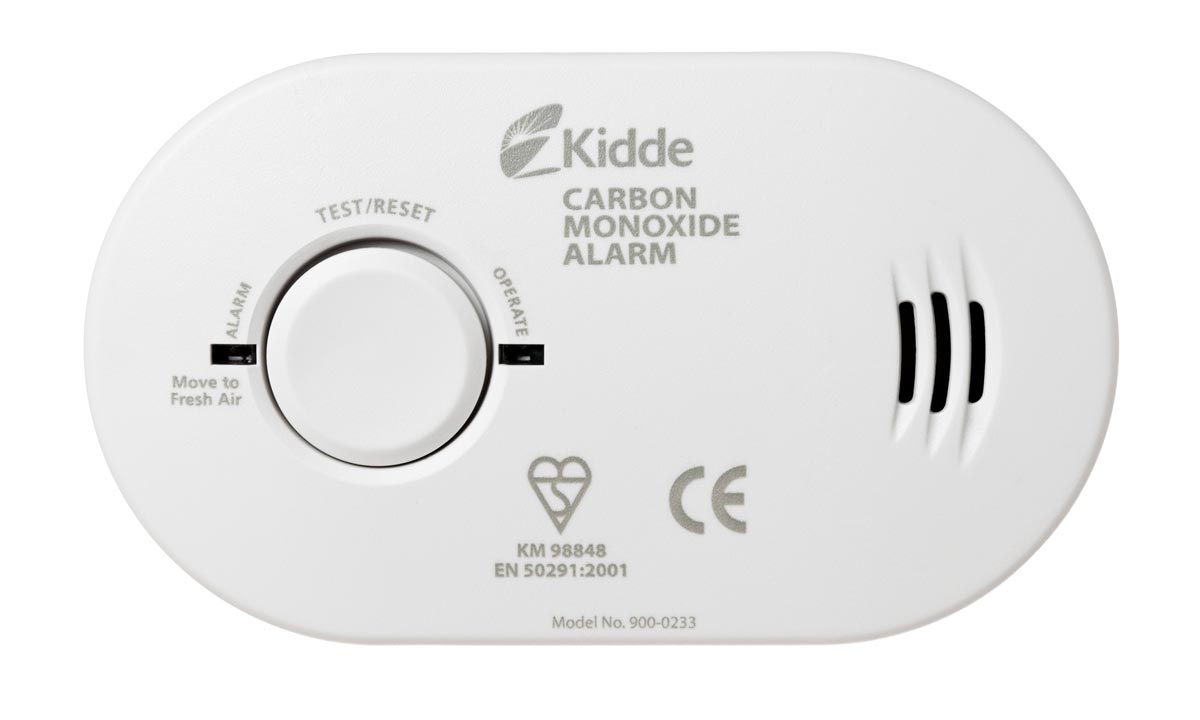
Carbon monoxide (CO) is an odorless, invisible gas that can cause illness and death.
Burning fuels in buildings produces trace amounts of pollutants like CO. Unvented gas-burning household appliances like gas stoves are a significant source of CO indoors. When vented properly, other gas appliances, like water heaters, furnaces, fireplaces, and clothing dryers, should contribute more minimally to indoor air pollution.
Indoor concentrations of carbon monoxide vary with factors like the age of a gas appliance and whether it is properly vented to the outdoors. The highest levels of CO are found indoors when gas appliances are incorrectly installed or poorly ventilated, or when maintenance is ignored. And current safety standards are insufficient to prevent CO poisoning.
It is critical that healthcare professionals can explain how fossil fuel combustion in buildings contributes to CO exposure indoors, make safety recommendations to prevent exposure, and recognize symptoms of CO poisoning in their patients.
If people can't see or smell carbon monoxide, how can they tell if it's making them sick?
Anyone can breathe in air laced with CO, including children, adults, and even pets. Higher concentrations are deadly because CO displaces oxygen in the bloodstream, denying oxygen to the heart, brain, and other parts of the body.
Mild to moderate cases of CO poisoning can cause an upset stomach, dizziness, headache, vomiting, chest pain, weakness, and/or confusion. Sometimes symptoms look very similar to the flu, although the flu is more likely to also cause a fever.
Each year more than 100 people in the United States die from indoor CO poisoning, and thousands more land in the emergency room.
Are there health impacts from exposure to low levels of carbon monoxide?
Researchers have noted in some instances that long-term exposure to low-level CO can lead to lasting, mild neurological effects. Although more research is needed, studies do show cause for concern. Studies published in 1990 and 1998 noted neuropsychological symptoms connected to low levels of CO exposure including changes in memory, sleep, vison, sense of smell and sense of direction, anxiety, balance problems, and psychomotor dysfunction.
A 2002 report points to several tools available to health professionals to measure carbon monoxide levels in patients, including blood tests that measure carboxyhemoglobin (COHB) concentration.
How much carbon monoxide is dangerous indoors?
The EPA does not currently set standards for indoor air quality. Because indoor CO is chemically identical to the CO that appears outdoors, it can cause the same health effects at the same exposure levels and duration. The National Ambient Air Quality Standards (NAAQS) for outdoor CO are 35 parts per million (ppm) for one hour and 9 ppm for eight hours. This means the EPA has determined that exposure above those levels is not safe.
There are currently no national requirements for household carbon monoxide detectors, but three-quarters of US states require homes to have CO detectors in at least some cases. Most detectors are only capable of detecting higher concentrations, where the health impacts can be acute. The nonprofit organization Underwriters Laboratories worked with the Consumer Product Safety Commission to set the UL 2034 safety standards for alarms (see table below).
It's important to note that standard detectors will not sound at very low levels of CO that could cause chronic exposures and impact sensitive populations. Individuals with underlying conditions like cardiovascular issues may want to consider purchasing a low-level CO detector.
Do gas stoves produce carbon monoxide?
Yes. CO is produced through the incomplete combustion of gas. Homes with properly installed and maintained gas stoves see CO levels between 5 ppm and 15 ppm—higher than average CO levels in homes without gas stoves, which average between 0.5 ppm and 5 ppm, according to the EPA. Poorly installed and maintained stoves can result in CO levels that are 30 ppm or higher. A 2015 study found that gas stoves can substantially increase the risk of elevated CO in the home. Out of the 316 homes studied, about 5 percent had short-term levels that went above California's ambient air quality standard of 20 ppm over a one-hour period or 9 ppm over an eight-hour period.
Ventilation of gas stoves is important, but it does not eliminate indoor exposures to pollutants. Since the transition to electric stoves will greatly reduce exposure to CO, some US cities are beginning to limit the use of gas stoves in homes.
Do the pilot lights on gas appliances release carbon monoxide?
If a pilot light on a gas stove is continuously burning, make sure that the flame is blue. A blue flame is an indication of complete combustion with no CO produced. If the flame is orange or yellow, the pilot light could be emitting CO. It's important to get a stove serviced if the burner flames are not blue, if the burners or pilot light produce soot, or if the burners do not light properly.
Do indoor propane heaters produce carbon monoxide?
Yes. Propane heaters produce CO, so avoid their use to eliminate this exposure. At a minimum, reduce CO exposure by following all safety instructions and ensuring that the heater is a contemporary model that is safe for indoor use, equipped with an oxygen depletion sensor that will automatically shut off the unit when CO levels are too high.
How can people protect themselves against carbon monoxide poisoning indoors?
If the home has CO detectors, it's important to test them to make sure they're working properly. If the home does not have CO detectors, consider installing one outside each sleeping area. The EPA recommends placing one detector on each floor of the home, about five feet above the floor or on the ceiling. For rentals without a CO detector, there's a chance that the property owner may be required to purchase one, so check the law in your state.
To greatly reduce exposure to CO from gas appliances, households and communities can transition to all-electric appliances, including stoves, water heaters, furnaces, fireplaces, and clothing dryers.
Nitrogen Dioxide FAQ

Nitrogen dioxide (NO2) is a gas that can cause numerous health impacts.
Burning fuels in buildings produces NO2 and other pollutants. Out of all gas-burning household appliances, gas stoves are the most significant source of indoor NO2, especially when unvented. When vented properly to the outdoors, other gas appliances like water heaters, furnaces, fireplaces, and clothing dryers contribute far more to outdoor air pollution than indoor air pollution.
It is critical that healthcare professionals can explain how fossil fuel combustion in buildings contributes to NO2 exposure both indoors and outdoors, leading to health impacts, so that patients can identify sources and limit their exposure to this pollutant.
Why is nitrogen dioxide harmful to human health?
Breathing elevated levels of NO2 inflames the lining of the lungs and can cause respiratory problems such as wheezing, coughing, chest tightness, and chronic obstructive pulmonary disease.
The Environmental Protection Agency (EPA) recently found a causal relationship between short-term exposure to NO2 and respiratory effects. It found that long-term exposure to NO2 is likely linked to asthma development.
Diseases like diabetes and cancer, as well as reproductive and developmental effects, are also linked to elevated levels of NO2.
Who can experience health impacts from nitrogen dioxide? Who is most at risk?
Anyone can breathe in air containing high concentrations of NO2.
Children are particularly at risk. Even small increases in short-term exposure to indoor NO2 can increase their asthma risks. Asthma has numerous triggers and widely varying impacts. Children living in a home with a gas stove have a 42 percent higher risk of experiencing asthma symptoms than those in homes without gas stoves, and a 24 percent higher risk of being diagnosed with asthma by a doctor.
Lower-income households may also be at a higher risk of exposure to gas stove pollution. Many factors contribute to higher levels of NO2 in lower-income households, including smaller unit size, more residents per home, and inadequate ventilation. These factors—compounded by a disproportionate asthma burden—put lower-income households at risk of negative health outcomes related to elevated indoor NO2.
How much nitrogen dioxide is dangerous?
The EPA regulates NO2 outdoors. The outdoor federal standard for NO2, created in 1971, is 53 parts per billion (ppb) over the course of a year. In 2010, the EPA created a one-hour NO2 exposure standard for outdoor air of 100 ppb. This means the EPA has determined that exposure above those levels is not safe.
However, the EPA does not regulate NO2 indoors, even though concentrations of indoor NO2 regularly reach levels that would be illegal outdoors (under state or federal standards).
There is also a growing body of research (summarized in this analysis) that suggests that indoor NO2 levels much lower than the federal outdoor standards can still lead to negative health outcomes. For example, a 2013 study of asthmatic children found that exposure to NO2 at levels as low as 11 ppb worsened children's asthma symptoms and increased the need for medication. In September 2021, the World Health Organization (WHO) decreased the safe threshold of recommended NO2 exposure by a factor of 4. The new guideline is for annual exposure of 10 μg/m3 (about 5 parts per billion, or ppb) and 24-hour exposure of 25 μg/m3 (about 13 ppb).
Do gas stoves produce nitrogen dioxide?
Gas stoves are one of the primary sources of NO2 in homes. The EPA states that homes with gas stoves can have concentrations of NO2 that are 50 to 400 percent greater than homes with electric stoves. While cooking on a gas stove, NO2 pollution peaks and often reaches levels so high indoors that it would violate EPA outdoor air quality standards. Studies have shown that using a gas stove or oven can cause indoor spikes of NO2 as high as 230 ppb while baking a cake or 184 ppb while boiling water.
Ventilation of gas stoves is important, but it does not eliminate indoor exposure to pollutants. Since the transition to electric stoves will greatly reduce exposure to NO2, some US cities are beginning to limit the use of gas stoves in homes.
How can people limit their exposure to nitrogen dioxide while cooking with gas stoves?
If a stove is equipped with an exhaust hood, be sure to use it throughout the cooking process. Check to make sure that it is vented to the outdoors, because some exhaust hoods simply recirculate air back into the room. Using the back burner of your stove for cooking, which is typically closer to the exhaust hood, will also limit your exposure to NO2. If a stove does not have a hood, open the windows for ventilation whenever possible.
Is ventilation alone enough to limit exposure to nitrogen dioxide?
No. Although it's important to always ventilate, not all exhaust hoods can reduce pollution to safe levels. Many are recirculating, meaning they move emissions around the kitchen and home without venting it outdoors. California's latest 2023 building code update will have differentiated requirements for gas and electric stoves. These requirements aim to maintain acceptable levels of NO2, which is emitted by gas stoves but not electric stoves. This is the first time a state has instituted ventilation requirements specific to gas stoves.
Research from Lawrence Berkeley National Laboratory, which helped inform the new California building code for ventilation, showed that exhaust hoods over gas stoves would need to meet more stringent requirements to protect health, as compared with hoods over electric stoves. This is particularly true in the smallest of units.
Lastly, surveys show that people generally do not use their exhaust hoods—either because they don't believe the hoods are needed, they don't believe the hoods are efficient, or the hoods are too noisy.
Fundamentally, replacing a gas stove with an electric stove may dramatically reduce indoor NO2 levels in the kitchen and improve air quality throughout the rest of the home.
Do fireplaces produce nitrogen dioxide?
There are two types of natural gas fireplaces: vented and unvented. Unvented gas fireplaces carry the largest health risk because they have the potential for incomplete combustion of natural gas. When that occurs, carbon monoxide and NO2 can be released into the home. Odorless carbon monoxide gas has been linked to health issues and, in extreme cases, death.
Studies in 2010 and 2011 found elevated levels of the pollutants with unvented gas fireplaces. This suggests that unvented fireplaces should be used sparingly. When doing so, make sure there is proper ventilation, and buy a carbon monoxide sensor for the room with the fireplace. There are two types of sensors: standard and low-level detectors.
What impact does nitrogen dioxide pollution have when it is vented outside the home from appliances like furnaces and water heaters?
Even gas appliances that properly vent outdoors represent a significant and overlooked portion of nitrogen oxide emissions (NOx), which include NO2. According to EPA emissions data, gas appliances contribute twice as much NOx as gas power plants in the United States. In California, burning fuels in buildings releases nearly as much NOx as light-duty passenger vehicles and nearly six times more than power plants.
Exposure to NO2 outdoors is a major public health concern. Worldwide, an estimated 4 million new cases of pediatric asthma every year can be attributed to exposure to NO2.
NO2 represents a triple threat. Not only is direct exposure to NO2 harmful to human health, but the gas is also a main ingredient in the formation of two of the most health-damaging pollutants: secondary particulate matter (soot) and ground-level ozone (smog). Many counties in the United States have high outdoor concentrations of ozone and particulate matter that do not meet EPA standards.
Switching to all-electric appliances will greatly reduce people's indoor and outdoor exposure to NO2, while simultaneously reducing ozone and particulate matter pollution outdoors.
Particulate Matter FAQ
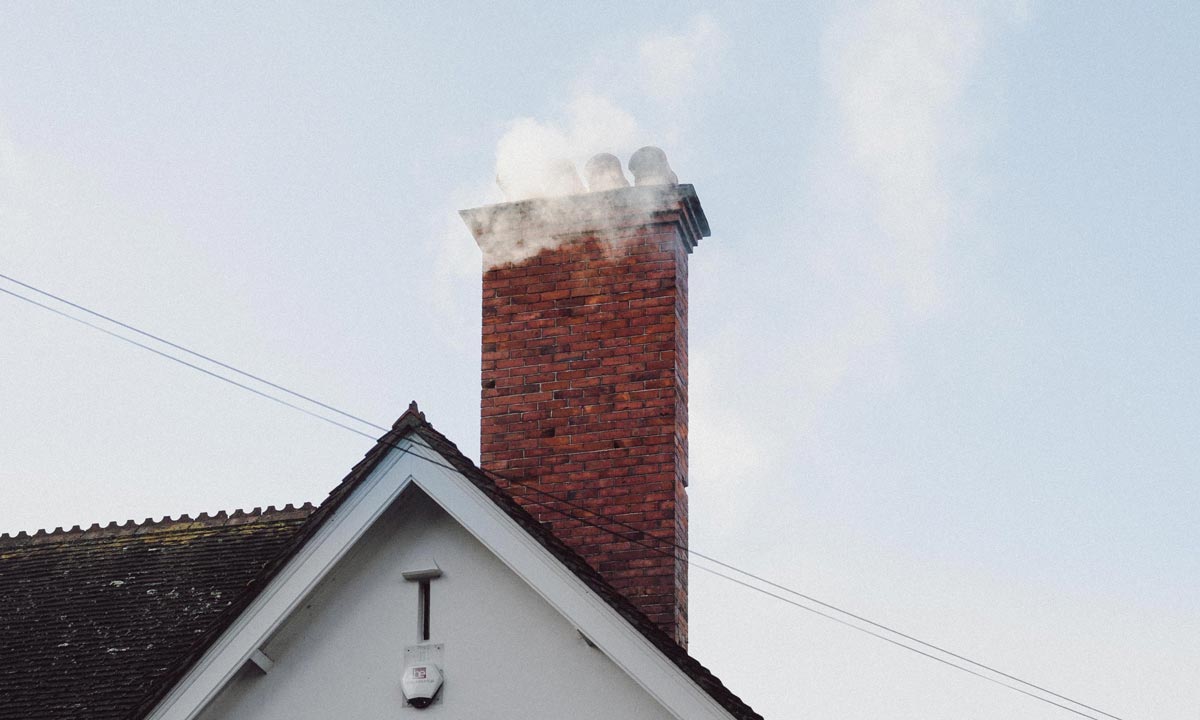
Particulate matter (PM2.5) refers to fine inhalable particles and liquid droplets 2.5 microns in diameter or smaller. Research on indoor and outdoor air pollution has clearly shown that particulate matter can penetrate deep into the lungs and cause numerous health impacts and premature death. In fact, PM2.5 is a leading predictor of mortality from cardiovascular, respiratory, and other types of disease.
Burning fuels in buildings produces pollutants including PM2.5. Gas-burning household appliances like water heaters, furnaces, fireplaces, and clothing dryers are vented outdoors and therefore contribute heavily to outdoor air pollution. Another household appliance, the gas stove, is one of the most significant sources of PM2.5 generated by fossil fuels indoors, especially when unvented. Other indoor sources of PM2.5 include mold, dust, pet dander, and cleaning products.
There are scientifically robust bodies of research on both indoor and outdoor air pollution, and how exposure impacts human health. Health professionals and policymakers are now beginning to understand how indoor and outdoor air quality relate.
It is critical that healthcare professionals are able to explain how fossil fuel combustion in buildings contributes to PM2.5 exposure so they can help patients identify sources and limit their indoor and outdoor exposure to this pollutant.
How is PM2.5 harmful to human health?
When PM2.5 lands on the lung's surface, it can cause tissue damage, lung inflammation, and can even enter the blood stream. Numerous studies have shown that PM2.5 can also cause asthma and respiratory inflammation, resulting in respiratory symptoms like coughing, phlegm, chest pain, or wheezing. Prolonged exposure can even result in premature death.
A 2021 study estimated that PM2.5 emissions from burning fossil fuels and wood/biomass in commercial and residential buildings are responsible for approximately 18,300 early deaths and $205 billion in health impacts in the United States.
Who can experience health impacts from PM2.5? Who is most at risk?
Anyone can breathe in air containing high concentrations of PM2.5, both indoors and outdoors. The groups most likely to experience adverse health impacts from PM2.5 include older adults with chronic heart or lung disease, children, and asthmatics.
Recent research has shown that communities of color and low-income communities bear a disproportionate brunt of health impacts from PM2.5 in the United States. A 2016 study found that individuals with long-term PM2.5 exposure living in locations with lower socioeconomic status experienced increased mortality compared to individuals living in higher socioeconomic status locations. Historical residential redlining has also been linked to higher PM2.5 pollution and higher rates of emergency department visits.
Children and infants are also at higher risk of PM2.5-related health outcomes. Because of their small lungs, they can breathe in more air per pound of body weight compared to adults. Children also breathe faster. A study initiated by the California Air Resources Board found that kids living in communities with high levels of PM2.5 had slower lung growth and smaller lungs at age 18 compared to a similar age group that grew up in a community with lower PM2.5 levels. This means that high concentrations of PM2.5 have the potential to harm children's lungs for the rest of their lives.
How much PM2.5 is dangerous?
Outdoor exposure to more than 12 micrograms per cubic meter (µg/m3) of PM2.5 annually, or 35 µg/m3 in a 24-hour period, is considered harmful to health based on standards set by the Environmental Protection Agency (EPA).
In 2020, EPA scientists sought to strengthen the annual standard to further reduce health harms. Although those recommendations were rejected by the Trump administration, they are now being revisited under the Biden administration.
While the EPA does not currently have an indoor standard for PM2.5, scientific research shows that high concentrations of PM2.5 can be problematic indoors as well—especially for children. One 2009 study found high concentrations of particulates indoors correlated to respiratory symptoms and increased rescue medication use.
Internationally, the World Health Organization (WHO) recommends lower thresholds. In 2021, the WHO roughly halved the safe threshold for PM2.5 exposure. The WHO recommends outdoor exposure to no more than 5 μg/m3 of PM2.5 annually and 15 μg/m3 for a 24-hour period. These apply to both indoor and outdoor environments. According to the WHO there is no difference in the hazardous nature of PM2.5 indoors compared to outdoors. Additionally, the health effects resulting from fossil fuel and biomass combustion of PM2.5 emissions are broadly the same.
Do gas stoves produce PM2.5?
Gas flames (even in the absence of cooking emissions) are a crucial source of PM2.5. Emissions from gas stoves are higher than from electric stoves. A 2021 study that evaluated cooking in 132 Canadian homes found that gas stoves emit twice as much PM2.5 compared to electric stoves. Although cooking activities like deep frying on electric stoves do emit particulates, studies note that that the same cooking activities on gas stoves can result in more PM2.5 emitted.
Ventilation of gas stoves is important, but it does not eliminate indoor exposures to pollutants. Since the transition to electric stoves will greatly reduce exposure to PM2.5, some US cities are beginning to limit the use of gas stoves in homes.
How can people limit their exposure to PM2.5 while cooking with gas stoves?
There are many ways to reduce the amount of PM2.5 entering the home from cooking. If the stove is equipped with an exhaust hood, be sure to use it throughout the cooking process. Check to make sure that it is vented to the outdoors because some exhaust hoods simply recirculate air back into the room. Using the back burner of your stove for cooking, which is typically closer to the exhaust hood, will also limit exposure. If the stove does not have a hood, open the windows for ventilation whenever possible. Air purifiers can also remove particulates if proper ventilation is not available.
Is ventilation alone enough to limit exposure to PM2.5?
Research has shown that when properly ventilated to the outdoors, many exhaust hoods can be effective at removing PM2.5 from gas stoves indoors. If there are questions about a specific hood's ability to remove particulates, there are resources that can help determine the unit's capabilities.
It's important to note that while some people are likely to be prompted by PM2.5 to turn on their exhaust hoods, many still do not use them. This may be because they don't believe they are needed, they are too noisy, or they don't believe they are efficient. In one California utility district, the annual public health burden of not using a range hood while cooking has been estimated to be nearly $1 million per 100,000 people.
Fundamentally, replacing a gas stove with an electric stove may dramatically reduce indoor PM2.5 levels in the kitchen and improve air quality throughout the rest of the home.
Gas-powered appliances like furnaces and water heaters vent outdoors. What kind of impact does PM2.5 pollution have outside the home?
Gas-powered water heaters, furnaces, fireplaces, and clothing dryers produce PM2.5 that is vented outdoors and contributes to ambient air pollution, which is regulated by the EPA. Gas appliances not only produce primary PM2.5 (which is released directly when burned), but they also release other gases and pollutants (like nitrogen dioxide), which react in the atmosphere to form secondary PM2.5.
PM2.5 pollution from household gas appliances vented outdoors compounds with that of other combustion sources, including wood, biomass, coal, gasoline, and diesel. A 2021 study found that the sum of PM2.5 emissions from gas, biomass, and wood burned in industrial boilers and buildings surpassed the emissions from coal-fired power plants. A 2020 MIT study published in Nature showed that residential and commercial buildings are now the leading source of early deaths from PM2.5 and ozone pollution generated from all sectors (including transportation).
These emissions disproportionately impact people of color. A 2021 study found that PM2.5 pollution formed from gas combustion in residential buildings and commercial cooking were among the largest sources of pollution disparities for Black, Hispanic, and Asian Americans.
Methane FAQ
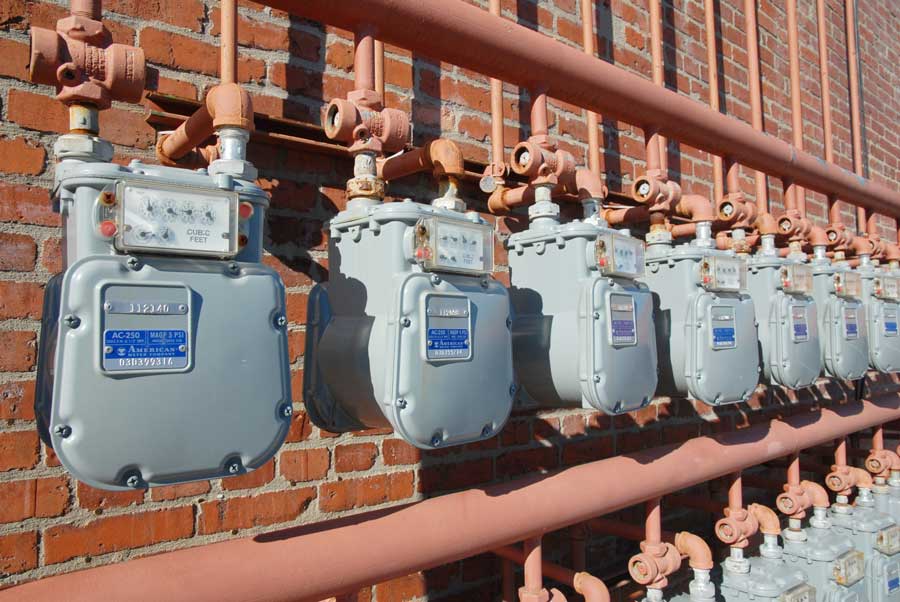
Methane (CH4) is a highly potent greenhouse gas that contributes to global climate change. Compared to carbon dioxide, methane has over 80 times the global warming potential (GWP) over a 20-year timescale. Exposure to methane has limited direct health impacts at high levels, but methane also contributes to the formation of ground-level ozone that is hazardous to human health.
As the principal component of natural gas, methane is emitted from gas-burning household appliances, usually as unburned gas. Notably, recent research has found that gas stoves leak methane even when not in use.
It is important that healthcare professionals can explain how fossil fuel combustion in buildings contributes to methane emissions and leaks, impacts the climate, and is linked to health and wellbeing. Patients can thereby better identify the risks associated with residential gas appliances.
Is methane harmful to human health?
The main danger that methane poses is through its high flammability at certain concentrations. In closed settings, high-enough levels of methane can displace oxygen and lead to oxygen deprivation. Generally, low to moderate levels of methane do not have a toxic effect in humans when inhaled and methane itself is considered biologically inert.
Methane is, however, a main component to forming ground-level ozone. Ground-level ozone is known to be harmful to human respiratory health even after short-term exposures.
Methane also contributes to global climate change, leading to rising sea levels, higher temperatures, and abnormal precipitation. These all directly affect human health and wellbeing as they can threaten water availability, increase the occurrence of heatwaves, disrupt food chains, make infectious diseases more prevalent, and displace populations.
How is methane related to ozone formation?
Methane can interact with nitrogen oxides (NOx) in sunlight to form ground-level ozone, which has negative impacts on human and environmental health. Ground-level ozone is different from stratospheric ozone, the latter of which helps shield the planet from ultraviolet rays.
Just like methane, ozone is a greenhouse gas that can also worsen air quality, increase temperatures, and exacerbate climate change effects that pose health risks to those already vulnerable.
Is methane regulated?
Because of a lack of direct health impacts from methane, it does not meet US Environmental Protection Agency (EPA) criteria as an air pollutant and does not have a regulated outdoor standard.
In 2021, New Source Performance Standards (NSPS) were proposed to reduce methane emissions from the oil and natural gas industry, including sites used for gas drilling, processing, transmission, and storage.
Despite this, other notable sources of methane are not regulated. Methane can still be emitted outdoors by gas appliances that are directly vented outside, such as water heaters.
Do gas stoves produce methane?
Gas stoves produce methane in two ways.
First, when gas stoves are in use, they release some gas as unburned methane. It is estimated that gas stoves in the U.S. emit 0.8-1.3 percent of their gas as unburned methane, which is equivalent to the annual CO2 emissions of half a million cars. The warming effect of gas stoves increases by 39 percent due to the methane it emits.
Second, a 2022 study by Lebel and colleagues found that gas stoves are a source of indoor methane emissions because they leak methane even while not in use. Methane emissions from gas stove use were about 4.5 times higher than while off, but the leaks while off contributed disproportionately to total methane emissions because gas stoves are usually off for most of each day.
It is important to note that not all gas stoves are equal in their methane emissions. Among the stoves included in the study, the top 5 percent of methane emitters (while either in use or off) contributed to nearly half of all emissions. The study also found that levels of methane emitted from each of the sampled appliances were not associated with appliance cost, brand, or age. This suggests that even updating or upgrading gas appliances will do little to reduce emissions and leaks.
How can people limit their exposure to methane while cooking with gas stoves?
The most immediate action is to increase ventilation. Range hoods are useful for reducing exposure while cooking, but studies have found they are only used 25-40 percent of the time. Additionally, range hoods are usually used while cooking, which is not effective if most emissions occur when the stove is not in use.
According to researchers, another way of directly reducing methane leaks for those unable to electrify their gas stoves is to tighten loose connectors between the stove and nearby pipes.
There are also other residential gas appliances, such as water heaters, in addition to gas stoves that emit and leak methane, which may contribute to indoor exposures. Despite there being limited evidence that methane exposure is linked to direct health impacts, ensuring proper ventilation can help keep indoor methane levels relatively low.
Do other appliances produce methane?
Gas-powered water heaters are another major source of residential methane emissions. A 2020 study by Lebel and colleagues found that 49 percent of residential units in the United States use natural gas for heating water. Over 40 percent of these heaters are storage water heaters (SWH) and around 3 percent are tankless water heaters (TWH). Although TWH emit nearly four times more methane than SWH because of their frequent on/off pulses, TWH are generally more energy efficient than SWH as they use less gas to heat an equivalent amount of water. The amount of methane released by TWH during operation is correlated with the age of the water heater, with older heaters tending to emit higher levels of methane.
Overall, methane emissions from residential appliances are common but often undercounted or unaccounted for in estimates. For example, EPA's Greenhouse Gas Inventory has methane emission estimates at the household level but does not report on emissions or leaks of specific appliances in the home. The upcoming 2022 GHG Inventory is expected to include these “post-meter” emission estimates.
To greatly reduce methane from gas appliances, households and communities can transition to all-electric appliances, including stoves, water heaters, furnaces, fireplaces, and clothing dryers.
Ozone FAQ
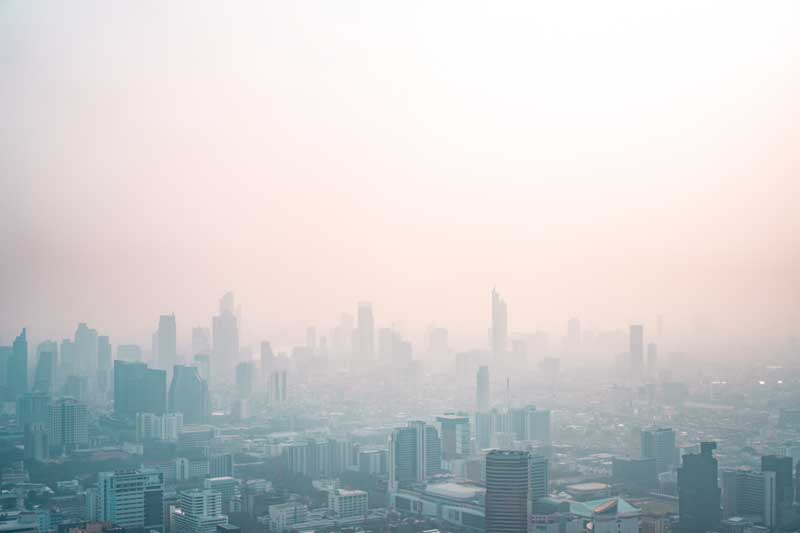
Ground-level ozone (O3), or tropospheric ozone, has negative environmental impacts and is harmful to human respiratory health even at low levels. Unlike primary pollutants which are directly emitted, ozone is a secondary pollutant formed in the atmosphere. Residential gas appliances emit methane and non-methane volatile organic compounds (VOCs), as well as nitrogen oxides (NOx), which are essential to the formation of ground-level ozone.
It is critical that healthcare professionals can explain how fossil fuel combustion in buildings contributes to ground-level ozone formation. Patients can thereby better identify and limit their exposures to this pollutant.
How is ozone formed?
In urban settings, non-methane VOCs are primarily responsible for ground-level ozone formation. However, on a global scale, methane is the dominant VOC that determines baseline ground-level ozone concentrations.
Methane and/or non-methane VOCs can interact with nitrogen oxides in sunlight to form ground-level ozone. Ground-level ozone is different from stratospheric ozone, which helps shield the planet from ultraviolet rays.
Just like methane, ground-level ozone is a greenhouse gas that can also cause worsened air quality, increase temperatures, and exacerbate climate change effects that pose health risks to those already vulnerable. High-ozone days may also become more common as our climate warms.
How is ozone harmful to human health?
Exposure to ground-level ozone has direct impacts on human health and contributes to climate change, which also affects human wellbeing.
Ground-level ozone is a lung irritant that causes damage and inflammation in the lungs, likened to getting a sunburn in your lungs. It is known to be harmful to human respiratory health even after short-term exposures. Health impacts can vary by the level of exposure, but generally consist of coughing and sore throat, breathing difficulties, airway inflammation and damage, increased risk of lung infections, and worsened chronic respiratory disease symptoms. According to the American Lung Association (ALA), high levels of ground-level ozone can cause chest-tightness and coughing even among healthy young adults.
The length of exposure to ozone also matters. Short-term exposure can worsen existing respiratory symptoms and increase susceptibility to respiratory infections. Long-term exposure is linked to worsened asthma outcomes and is thought to be a potential cause of asthma and chronic obstructive pulmonary disease (COPD) development. Ground-level ozone is also estimated to be linked to nearly 1 million premature deaths each year.
Emerging evidence has shown potential links between long-term ground-level ozone exposure and heart disease. A 2016 study conducted by the US Environmental Protection Agency (EPA) found an association between increased ground-level ozone exposure and risk of cardiovascular-related deaths, even after accounting for common harmful air pollutants such as particulate matter 2.5 (PM2.5) and nitrogen dioxide (NO2). Similarly, a 2022 study assessing ground-level ozone's impacts on cardiovascular mortality in China found an association between ground-level ozone exposure and heightened risk of death from both overall health disease and ischemic heart disease.
Ground-level ozone is a greenhouse gas that contributes to global climate change, leading to rising sea levels, higher temperatures, and abnormal precipitation. These all have direct impacts for human wellbeing as they can threaten water availability, increase the occurrence of heatwaves, disrupt food chains, make infectious diseases more prevalent, and displace populations.
Who can experience health impacts from ozone? Who is most at risk from ozone exposure?
Anyone can be affected by ground-level ozone exposure regardless of age or health status. However, those with pre-existing lung conditions, such as asthma or COPD, are at heightened risk due to reduced lung capacity. Others at risk include children, older adults, and people who spend many active hours outdoors, such as outdoor workers.
High ground-level ozone levels are likely to be found in urban areas, meaning people who live in urban settings are especially at risk of exposure. While ground-level ozone may be concentrated in urban spaces during hot, sunny days, it can also be carried longer distances by wind and affect non-urban areas.
Is ozone regulated?
Ambient air concentration of ground-level ozone is regulated by the EPA. While concentrations of other regulated air pollutants have declined nationwide since 1990, ground-level ozone has shown the smallest decrease. Its current acceptable level is 0.07 parts per million (ppm) averaged over 8 hours. Similarly, the 8-hour daily maximum standard set by WHO is 0.05 ppm.
However, research has shown that ground-level ozone concentrations well below the regulatory level can have negative health impacts, especially among already-susceptible populations such as older adults. A 2021 study conducted in California, which currently has 11 of the 25 most ozone-polluted cities in the United States, found that ozone and heat together increased risk of hospitalizations, especially among poorer communities. Scientists and advocates have pushed for more stringent standards for ground-level ozone from the EPA, arguing that the current standards are based on outdated research and do not adequately protect vulnerable populations.
While there is no indoor residential standard for ground-level ozone, there are standards set for the workplace. The Occupational Safety and Health Administration (OSHA), which regulates exposures in the workplace, and the National Institute of Occupational Safety and Health (NIOSH), which researches and recommends occupational exposure limits, both suggest keeping ground-level ozone levels below 0.10 ppm over 8 hours in the workplace.
Do gas stoves and other residential gas appliances produce ozone?
While gas stoves and other residential gas appliances do not directly emit ozone, they emit nitrogen oxides, such as nitrogen dioxide, and methane which react to produce ground-level ozone as a secondary air pollutant.
Other household appliances, such as ozone generators that are used as air cleaners, can also drastically increase indoor ozone levels. These ozone-generating air cleaners are not effective in reducing either indoor pollutants or biological contaminants and can instead generate unhealthy levels of ozone indoors. The California Air Resources Board (CARB) provides a list of CARB-certified air cleaners that have been tested for electrical safety and ozone emissions.
Indoor ozone levels are generally lower than outdoor levels in the absence of ozone generators, although other products used in homes can contribute to outdoor ground-level ozone formation. Atmospheric chemistry studies in homes have shown that chemicals from sources such as personal care products can contribute to outdoor ozone formation in urban spaces.
To greatly reduce the formation of ground-level ozone from gas appliances, households and communities can transition to all-electric appliances, including stoves, water heaters, furnaces, fireplaces, and clothing dryers.
Formaldehyde FAQ

Formaldehyde is a colorless and flammable gas with a strong odor that is detectable even at relatively low concentrations. It has profound impacts on human health: formaldehyde can cause cancer through chronic exposure and is hazardous even at low levels.
Formaldehyde is emitted from a variety of indoor sources, including gas stoves, in addition to consumer products, and environmental tobacco smoke. According to the World Health Organization (WHO), outdoor formaldehyde concentrations are usually low and do not contribute significantly to indoor concentrations. As such, formaldehyde is often considered a distinctly indoor air pollutant.
It is critical that healthcare professionals can explain how fossil fuel combustion in buildings contributes to formaldehyde emissions, which are linked to health and wellbeing. Patients can thereby better identify and limit their exposures to this pollutant.
How is formaldehyde harmful to human health?
Formaldehyde exposure has health impacts even at low levels. This can include irritation to the eyes and upper airways, impacts on the lungs through increased asthma and allergy symptoms, and eczema when in contact with skin. Exposure at higher levels is associated with skin rashes, shortness of breath, wheeze, and lung function changes.
Formaldehyde is also known to be a human carcinogen. The International Agency for Research on Cancer (IARC) classifies formaldehyde as a carcinogen that causes nasopharyngeal cancer in humans. Additionally, workers who have had chronic workplace exposures to formaldehyde have shown a heightened risk of rare nose and throat cancers.
While formaldehyde can usually be smelled at acute exposure levels, individuals who are especially sensitive to formaldehyde may be affected before levels reach those detectable by smell.
Who can experience health impacts from formaldehyde? Who is most at risk from formaldehyde exposure?
Children, elderly people, and people with asthma and other preexisting lung conditions may be more sensitive to formaldehyde exposure.
Certain groups may be more likely to be exposed to formaldehyde. Lower-income households may face disproportionately heightened formaldehyde exposure because less-costly building materials that contain formaldehyde, such as pressed wood products, are more commonly used in their homes.
Industrial workers can also be exposed to higher levels of formaldehyde than the general population as they may produce formaldehyde or other products that contain formaldehyde. Lab technicians, healthcare professionals, morticians, beauticians, and nail salon technicians may also face higher occupational exposures.
Is formaldehyde regulated?
The US Environmental Protection Agency (EPA) does not regulate formaldehyde levels in indoor air from any source other than composite wood products.
While there is no indoor residential standard for formaldehyde, there are standards set for the workplace in the US. The Occupational Safety and Health Administration (OSHA), which regulates exposures in the workplace, set their permissible exposure limit of formaldehyde to 0.75 parts per million (ppm) averaged over 8 hours. In contrast, the National Institute of Occupational Safety and Health (NIOSH), which researches and recommends occupational exposure limits, set their recommended exposure limit of formaldehyde to a more stringent 0.016ppm averaged over 8 hours.
Some states also have their own limits on formaldehyde exposure. California's Office of Environmental Health Hazard Assessment (OEHHA) has an acute recommended exposure limit of 0.04 ppm averaged over one hour and a reference exposure limit of 0.007 ppm averaged over 8 hours.
Do gas stoves and other residential gas appliances produce formaldehyde?
Formaldehyde is produced during natural gas combustion. Several studies show how cooking with a gas stove can increase indoor formaldehyde levels.
For example, a study on the impact of simmering sauces over gas stoves found that flames in contact with the metal burner were lower in temperature, resulting in a marked increase in formaldehyde and NO2 emissions. Simmering on even just one gas burner (on “low”) without range hood exhaust use can cause formaldehyde concentrations to exceed California OEHHA's recommended exposure limits for both acute and 8-hour exposures.
Another simulation study found that, not accounting for the formaldehyde emissions from building materials and furniture, natural gas cookstoves could cause 3-9 percent of Southern California households to exceed the state's OEHHA 8-hour reference exposure limits for formaldehyde.
A study conducted in China showed that within 10-20 minutes of gas stove use in the kitchen, formaldehyde levels in both the kitchen and adjacent living room exceeded standards set by WHO when the adjoining door was kept open.
Aside from gas stoves, fireplaces (especially unvented) and fuel-burning space heaters can potentially increase indoor formaldehyde concentrations. Open fireplaces that allow formaldehyde-containing wood smoke to directly enter the home can increase indoor formaldehyde.
Other residential gas appliances are vented and, barring any issues with installation or maintenance, should not contribute to indoor formaldehyde emissions. Overall, researchers recommend further studies in this area to better understand the contribution of formaldehyde from residential gas appliances to indoor concentrations.
How can people limit their exposure to formaldehyde while cooking with gas stoves?
Indoor formaldehyde concentrations can be controlled by increasing household ventilation. For example, while cooking with a gas stove, using a range hood can greatly reduce formaldehyde concentration buildup in the home. However, range hood use alone may not be enough to prevent formaldehyde exposure: there may still be a significant increase in levels even while cooking with the range hood on.
Although electrifying gas stoves is the best way to reduce formaldehyde exposure during cooking, ensuring proper ventilation can help lower indoor formaldehyde levels if electrification is not possible. Research has suggested that certain air cleaners with activated carbon filters or absorbent filters may be able to remove gaseous, volatile air pollutants and potentially formaldehyde.
Are there other household sources of formaldehyde?
There are several household sources of formaldehyde that may compound with formaldehyde emitted by residential gas appliances. This may include indoor combustion sources, such as smoking, candle-burning, incense-burning, and open fireplaces.
Additionally, manufactured wood products and household products such as glues, paints, caulks, pesticides, cosmetics, and detergents are also potential sources of formaldehyde off-gassing. Because certain wood products and construction materials emit formaldehyde, formaldehyde levels tend to be higher in newer homes. Reducing formaldehyde-containing products in the home and keeping indoor temperatures and humidity moderate, in addition to increasing ventilation, are ways of reducing formaldehyde exposures.
Formaldehyde can also be formed through secondary reactions between volatile organic compounds (VOCs) and ozone. As such, ozone generators that are used as residential air cleaners can also drastically increase indoor formaldehyde levels.
To greatly reduce exposure to formaldehyde from gas appliances, households and communities can transition to all-electric appliances, including stoves and fireplaces, in addition to addressing these additional household sources.
Benzene FAQ
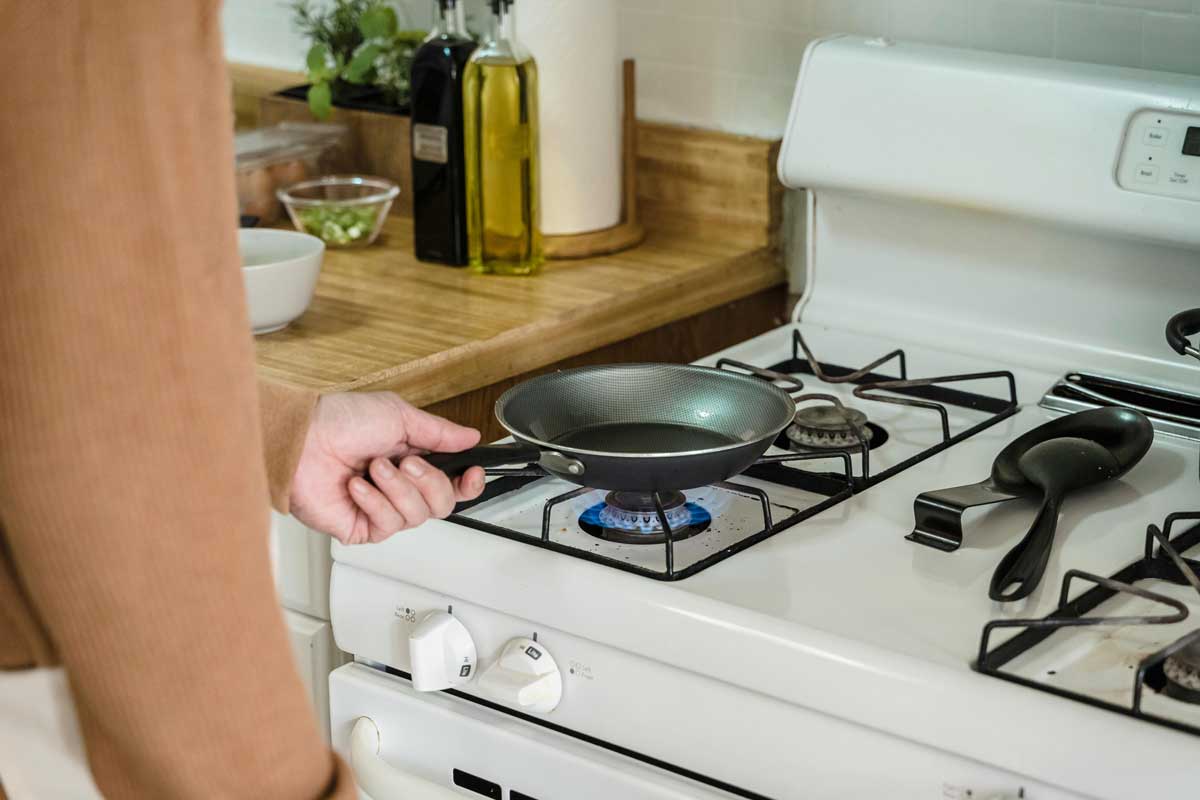
Benzene is a colorless-to-light yellow liquid at room temperature but quickly evaporates into a gas when exposed to air. It is flammable, has a sweet odor, and is commonly grouped into a class of pollutants called volatile organic compounds (VOCs). Chronic benzene exposure has been linked to higher risk of cancers like leukemia and other blood disorders.
Benzene is naturally found in fossil fuels, and is commonly used in industrial processes. Human exposure can be linked to multiple indoor and outdoor sources, including gas stoves, various consumer products, gasoline, car exhaust, and environmental tobacco smoke.
It is critical that healthcare professionals explain how fossil fuel combustion in buildings contributes to benzene emissions, which are linked to health and wellbeing. Patients can thereby better identify and limit their exposures to this pollutant.
How is benzene harmful to human health?
The human health harms of benzene exposure vary depending on the route and duration of exposure. Brief, high-level benzene exposure can irritate skin, eyes, throat, and lungs, and it may impact the nervous system, causing symptoms like headache, drowsiness, loss of consciousness, and even death.
The International Agency for Research on Cancer (IARC) also classifies benzene as a carcinogen that causes leukemia in humans. Other long-term impacts of chronic exposure can include anemia, low white blood cell count, and low blood platelet count.
Are benzene concentrations in air regulated?
To minimize risk of chronic benzene exposure, more than 50 countries have established annual average exposure benchmarks that range from 0.63 to 1.6 ppbv (parts per billion by volume). However, the World Health Organization states that “no safe level of exposure can be recommended” from indoor and outdoor air. The United States has not established indoor air standards or guidelines for benzene in residential settings, but two agencies (OSHA and NIOSH) established standards in workplace/occupational settings.
Does natural gas contain benzene?
Three studies (Michanowicz et al. 2022, Lebel et al. 2022, and Rowland et al. 2024) have studied the benzene content of natural gas before it is burned in household appliances, like gas stoves. The most recent and comprehensive of these studies found that benzene is present in 97% of the natural gas samples taken from residential gas stoves and other gas appliance lines across North America. However, benzene concentrations varied depending on location — Vancouver, Los Angeles, Calgary, and Denver had average benzene concentrations at least two times higher than other cities sampled.
Do gas stoves leak benzene when turned off?
Yes, gas stoves leak gas containing benzene when the cooktop and oven are turned off. The study sought to understand the potential implications on kitchen air benzene concentrations. The researchers were able to model this by combining their findings on natural gas benzene content with a previous study’s findings on gas stove leakage rates. The models demonstrated that leaks consistently elevated kitchen air benzene concentrations over the ambient background concentration of 0.17 ppbv, and in realistic but worst-case scenarios (high benzene leakages rates and low ventilation rates in a small home) leaks can raise concentrations above health benchmarks and secondhand smoke concentrations.
Because natural gas is odorless, federal regulation requires that natural gas is supplemented with an odorant that makes leaks detectable to people “with a normal sense of smell.” While odorants do successfully ensure larger leaks are detected, Rowland et al. 2024 identified that smaller gas leaks can go undetected even for people with a normal sense of smell, leading to elevated and potentially persistent indoor benzene levels from gas stove leaks.
Do gas stoves produce benzene when turned on?
Yes, gas stoves produce benzene when the cooktop or oven is in use. In California and Colorado homes, Kashtan et al. 2023 measured the resulting benzene concentrations in kitchen and bedroom air when gas stoves were turned on. In every test case, using a single gas burner or the oven raised the kitchen benzene concentration above that kitchen’s original baseline. In about a third of the test cases using a single gas burner, kitchen benzene concentrations surpassed 0.78 ppbv (reaching 11.6 ppbv in one home) — exceeding health benchmarks and benzene concentrations from secondhand smoke. Benzene originating in the kitchen was shown to disperse and raise concentrations in other rooms by 5 to 70 times over their original baseline, again exceeding health benchmarks on occasion. Lastly, this study confirmed that “neither induction stoves nor the food being cooked emitted detectable benzene.”
Is more benzene produced when gas stoves are turned on versus turned off?
Gas stoves contribute to elevated benzene concentrations in the home whether turned on or off. To better understand the risks posed by these two scenarios, we can compare the emission rates and resulting indoor concentrations. Kashtan et al. 2023 found that benzene emission rates are far higher when gas stoves are turned on (by 70 to 640 times) and can result in indoor concentrations up to 11.6 ppbv. The caveat is stoves are typically only used for relatively brief periods meaning they are turned off for most of the day. While benzene emission rates are lower when turned off, the Lebel et al. 2022 study’s modeling demonstrates that the cumulative emissions over the course of a day can result in indoor concentrations up to 7.3 ppbv in a realistic but worst-case scenario. It is important to note that other factors like building size and ventilation also influence the relationship between emission rates and resulting indoor concentrations.
How can people limit their exposure to benzene while cooking with gas stoves?
Removing the source of benzene is the best way to reduce exposure. Transitioning to electric stoves during cooking will eliminate benzene exposure from the cooking fuel. Proper ventilation can help lower indoor benzene levels, but range hood use alone with gas stoves may not be enough to prevent benzene exposure while cooking. Research has suggested that certain air cleaners with activated carbon filters or absorbent filters may be able to better remove gaseous, volatile air pollutants like benzene.
Are there other sources of benzene?
There are several other common sources of benzene. Tobacco smoke is a primary source, and others indoor sources are glues, adhesives, cleaning products, paint and paint strippers, and art supplies. Outdoor sources include gasoline fumes, car exhaust, wildfires, and industrial emissions (particularly for industrial workers). It is important to minimize exposure to each of these sources.
